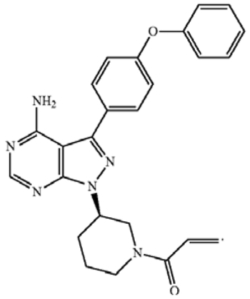Maatita – Less can be More | Quarles & Brady LLP
Is it possible that adding more specificity and detail to a design claim can render the claim indefinite and non-enabled under 35 U.S.C. 112? According to the USPTO, the answer is: yes.
In re Maatita, decided in 2018, is a seminal case on the requirements for enablement and definiteness under 35 U.S.C. § 112 in the design patent context. 900 F.3d 1369 (Fed. Cir. 2018). In Maatita, the U.S. Court of Appeals for the Federal Circuit (“CAFC”) considered whether the claimed design shown below, which included only a bottom plan view of a shoe sole, was definite and enabled under 35 U.S.C. § 112.
During examination, the United States Patent & Trademark Office (“USPTO”) had rejected the claimed design as indefinite and not enabled, alleging that the figure did not provide sufficient detail for the depths of the solid line claimed portions of the sole. In support of the § 112 rejections, the USPTO provided multiple three-dimensional configurations, shown below, that could be encompassed by the claim, alleging that “one would not know which of the many possible distinct embodiments of the claim is applicant’s.” Id. at 1374.
Ultimately, the CAFC rejected the standard proffered by the USPTO and held instead that a claimed design complies with the requirements of § 112 “if one skilled in the art, viewing the design as would an ordinary observer, would [] understand the scope of the design with reasonable certainty based on the claim and visual disclosure.” Id. at 1377. Using this standard, the court overturned the USPTO and found that the claim in question was both definite and enabled.
Thus, according to Maatita, a single two-dimensional view can encompass multiple three-dimensional embodiments, even without providing any three-dimensional information. It would seem, then, that providing three-dimensional information regarding depth, contours, and even additional views of a design would render a design more definite and enabled, right? As it turns out, the answer’s not so simple.
In many cases, patent examiners are rejecting three-dimensional designs on similar bases as provided in the original rejection to the design of Maatita.
As one example, in a final rejection issued in U.S. Application 29/752,970, a design claiming a single side elevation view of a shoe was rejected as indefinite and not enabled. Though the Applicant cited Maatita in support of patentability, the Examiner alleged that the facts of Maatita “relate to a single plan view of an outsole presented without shading or contour lines having any indication of form or depth, and therefore no indication of three-dimensionality.” Because the claimed design included surface shading indicating a surface with contour, the examiner alleged that the holding of Maatita did not apply, and that the claim was not enabled since “the exact amount of protrusion from the outer edges to the raised central surface areas cannot be determined based on a single straight on view.”
Similarly, in a final rejection issued in U.S. Application 29/613,443, the Examiner rejected a claimed design for a helmet under § 112 as allegedly being indefinite and non-enabled. In that case, the Examiner stated that because multiple views of the claimed helmet design were provided, the claim was directed to a three-dimensional design of a helmet, and thus that the ruling of Maatita did not apply. In the rejection, the Examiner required that additional surface shading be added to further clarify the three-dimensional configuration of the claimed helmet. The drawings were amended to add the surface shading before the claim was ultimately allowed.
The narrow interpretation of Maatita in those cases is consistent with our experience in prosecuting design cases. Ultimately then, while it may seem counterintuitive, if a claimed design includes any details indicating a specific three-dimensional configuration of an article, it is likely the USPTO will apply a stricter standard for enablement and definiteness to the claimed design than the one applied by the court to the design of Maatita.
As a final takeaway, if an Applicant wants to rely on Maatita for definiteness and enablement of a claimed design, the design should be tailored to meet the specific factual scenario of the design of Maatita. Specifically, to maximize claim breadth and minimize the risk of a § 112 rejection, the applicant can file a single elevation or plan view of an article without stippling, contour lines, surface shading, or other indicators of three-dimensionality. While it may not make intuitive sense that removing specificity from a claimed design can potentially make a previously indefinite design definite, when it comes to the current standards for applying Maatita, less can be more.







